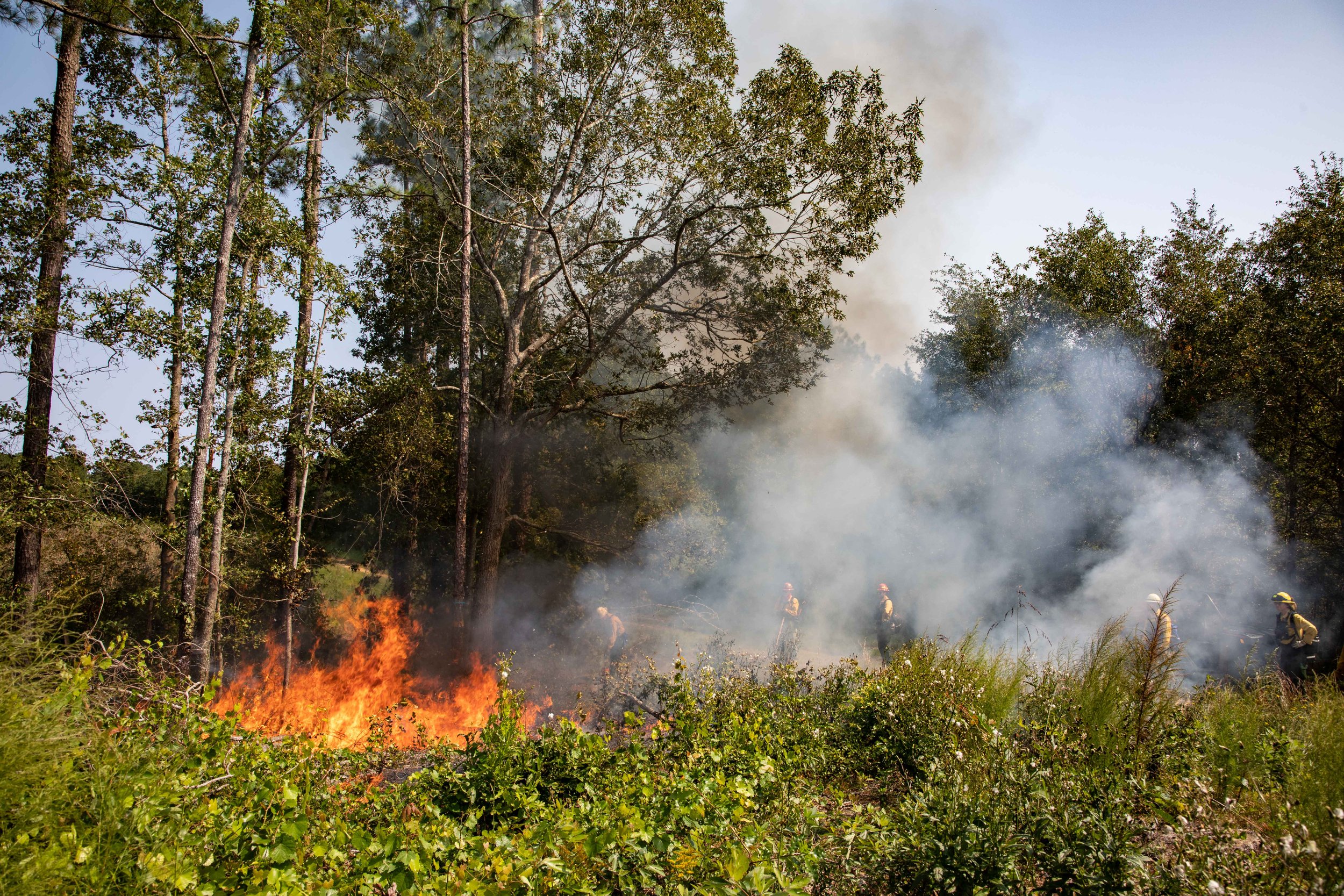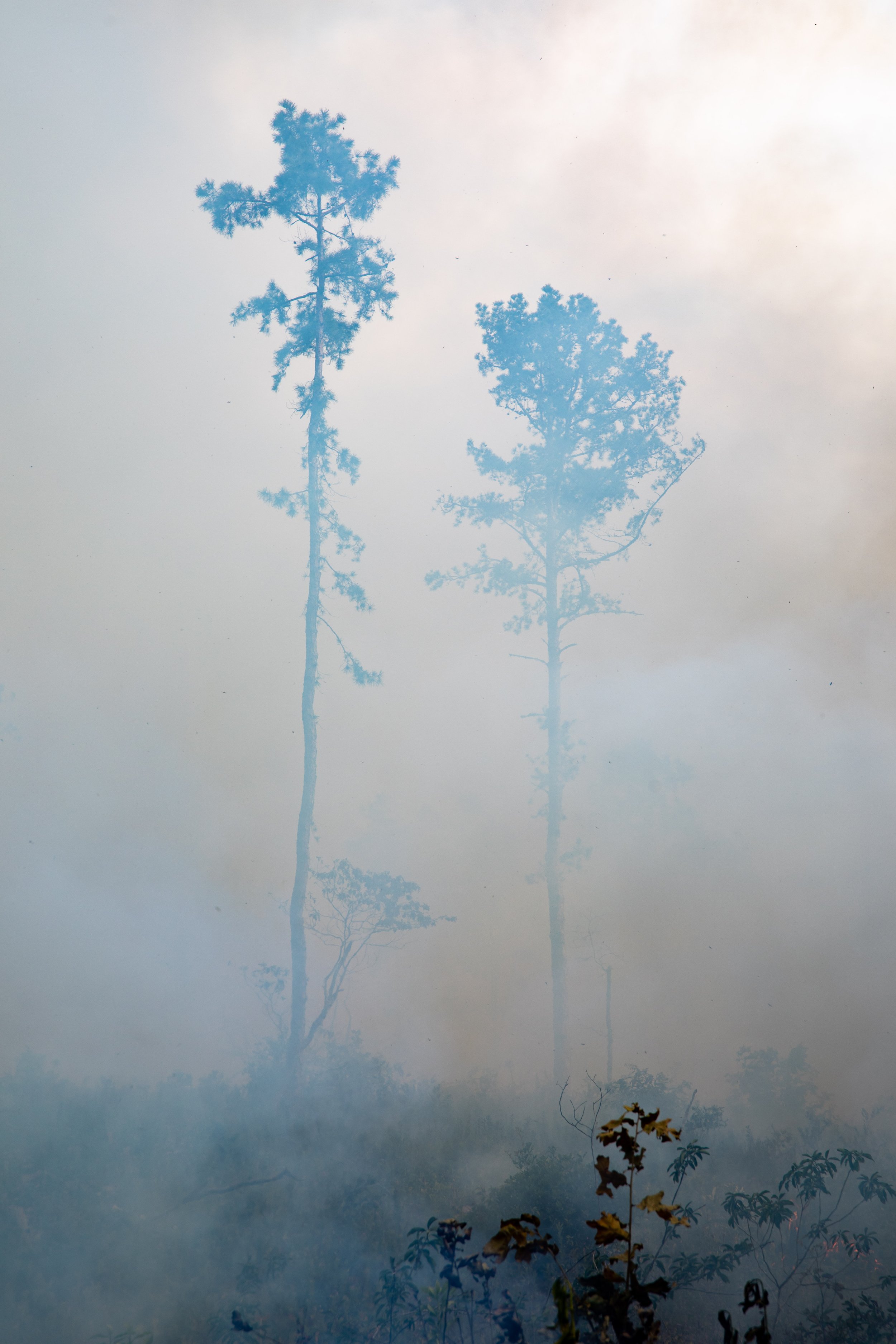Fighting Fire With Fire
The burn starts out slow, a few flames rolling across the eastern edge of the unit as the crew tests the weather conditions and makes sure the fire does not cross the swampy phragmites at the property’s boundaries. Once the test is complete, the drip torch crew proceeds to make their way back and forth across the preserve until the 43-acre burn unit is covered in flames and enveloped in a haze of smoke. You can hear the crackling, snapping, and roaring as the fire burns different types of vegetation.
Before a prescribed burn can even happen, the individuals and agencies involved put together a detailed burn plan that addresses all of the safety and biological factors that might affect the fire. “We actually write a prescription, like a doctor would write a prescription for a medication, for what we want the parameters to be when we burn,” Wilson said. “By the time we strike the match, 80 to 90 percent of my job is already done.” The parameters include things like wind direction, temperature, fuels, relative humidity, days since rain, and the number of people and equipment needed.
All of these factors affect how the fire will act on the landscape and need to be approved at multiple levels before any fire can be used. The goal of a prescribed burn is to minimize extreme fire behavior and ensure the smoke has somewhere to go. If on burn day even one of those factors is outside the range detailed in the prescription, the fire is called off until another day when the conditions are right.



















